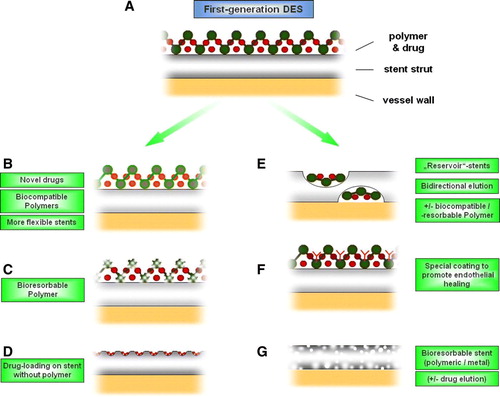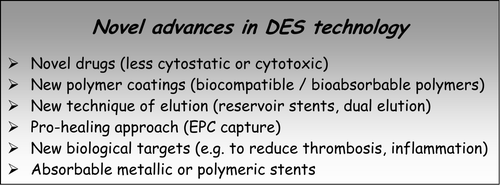Figures & data
Figure 2. Simplified, schematic overview over some of the novel strategies in coronary stent systems. First-generation DES consist of a stent strut and a polymer, on which the specific agents (e.g. sirolimus, paclitaxel) are loaded (A). In the next generation of coronary stents, several novel approaches were undertaken to overcome the limitations of first-generation DES. For example, novel drugs, biocompatible polymers, and more flexible stents were developed (B). Furthermore, systems using bioresorbable polymers (which are absorbed after elution of the specific agent) are being tested (C). Another approach uses micro- or nanoporous surfaces, into which agents are loaded without the need for a polymer (D). Similarly, ‘reservoir’ stents contain pores, in which the specific agent (+/ − a biocompatible polymer) is loaded, leaving a ‘clean’ surface, thereby facilitating deployment and potentially reducing thrombogenicity. Moreover, bidirectional, differential elution would be feasible with the use of this system (E). ‘Bioactive’ stents are coated with specific substances to facilitate re-endothelialization in order to tackle the doom of stent thrombosis (F). Finally, a novel system of stents that are absorbed after a certain time following deployment (‘bioresorbable stent’) is being developed (G). See text for further details. Of note, some of these systems combine several of the above-shown principles.

Table I. List of the novel stent systems discussed in this review, including the (proposed) main improvement as compared to first-generation DES.

